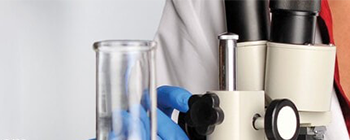Learn More


2-Propanol (HPLC), Fisher Chemical™
HPLC mobile phase for analytical and preparative separations
Supplier: Thermo Fisher Scientific BPA4514
Specifications
| 7 | |
| -89.5°C | |
| 0.025 AU max. at 254nm, 0.13 AU max. at 230nm, 0.25 AU max. at 220nm, 1.00 AU max. at 205nm | |
| 0.785g/cm³ | |
| 4 L | |
| Glass Bottle | |
| Mobile phase for HPLC applications | |
| 2ppm max. | |
| C3H8O | |
| 43mmHg at 20°C | |
| 0.10% max. | |
| KFZMGEQAYNKOFK-UHFFFAOYSA-N | |
| propan-2-ol | |
| 3776 | |
| 60.1 | |
| HPLC |
| 2-Propanol | |
| 67-63-0 | |
| Colorless | |
| 81°C | |
| Pass Test | |
| Liquid | |
| 1.3740 to 1.3760 (at 25°C) | |
| 99.9% min by GC | |
| MFCD00011674 | |
| 2.27 mPa/s at 20°C | |
| isopropanol, 2-propanol, isopropyl alcohol, 2-hydroxypropane, alkolave, avantine, hartosol, dimethylcarbinol, sec-propyl alcohol, petrohol | |
| CC(C)O | |
| 60.096 | |
| CHEBI:17824 | |
| ≥99.9% |
Chemical Identifiers
| 67-63-0 | |
| 60.096 | |
| KFZMGEQAYNKOFK-UHFFFAOYSA-N | |
| 3776 | |
| propan-2-ol |
| C3H8O | |
| MFCD00011674 | |
| isopropanol, 2-propanol, isopropyl alcohol, 2-hydroxypropane, alkolave, avantine, hartosol, dimethylcarbinol, sec-propyl alcohol, petrohol | |
| CHEBI:17824 | |
| CC(C)O |
Safety and Handling


WARNING!
Emergency Overview
Flammable liquid and vapor. May cause irritation of respiratory tract. Vapors may cause drowsiness and dizziness. Aspiration hazard if swallowed - can enter lungs and cause damage. Hygroscopic. Use personal protective equipment. Keep away from open flames, hot surfaces and sources of ignition. Wash off immediately with plenty of water for at least 15 minutes. Obtain medical attention. Rinse immediately with plenty of water, also under the eyelids, for at least 15 minutes. Obtain medical attention. Move to fresh air. Move to fresh air. If breathing is difficult, give oxygen.
NFPA
Health:1
Flammability:3
Instability:0
DOTInformation : DOT Class 3, : Flammable Liquid
Safe-Cote™ bottles that provide the purity of glass and most of the benefits for storing and dispensing chemicals. If they break, glass fragments and liquids are more likely to remain trapped.





